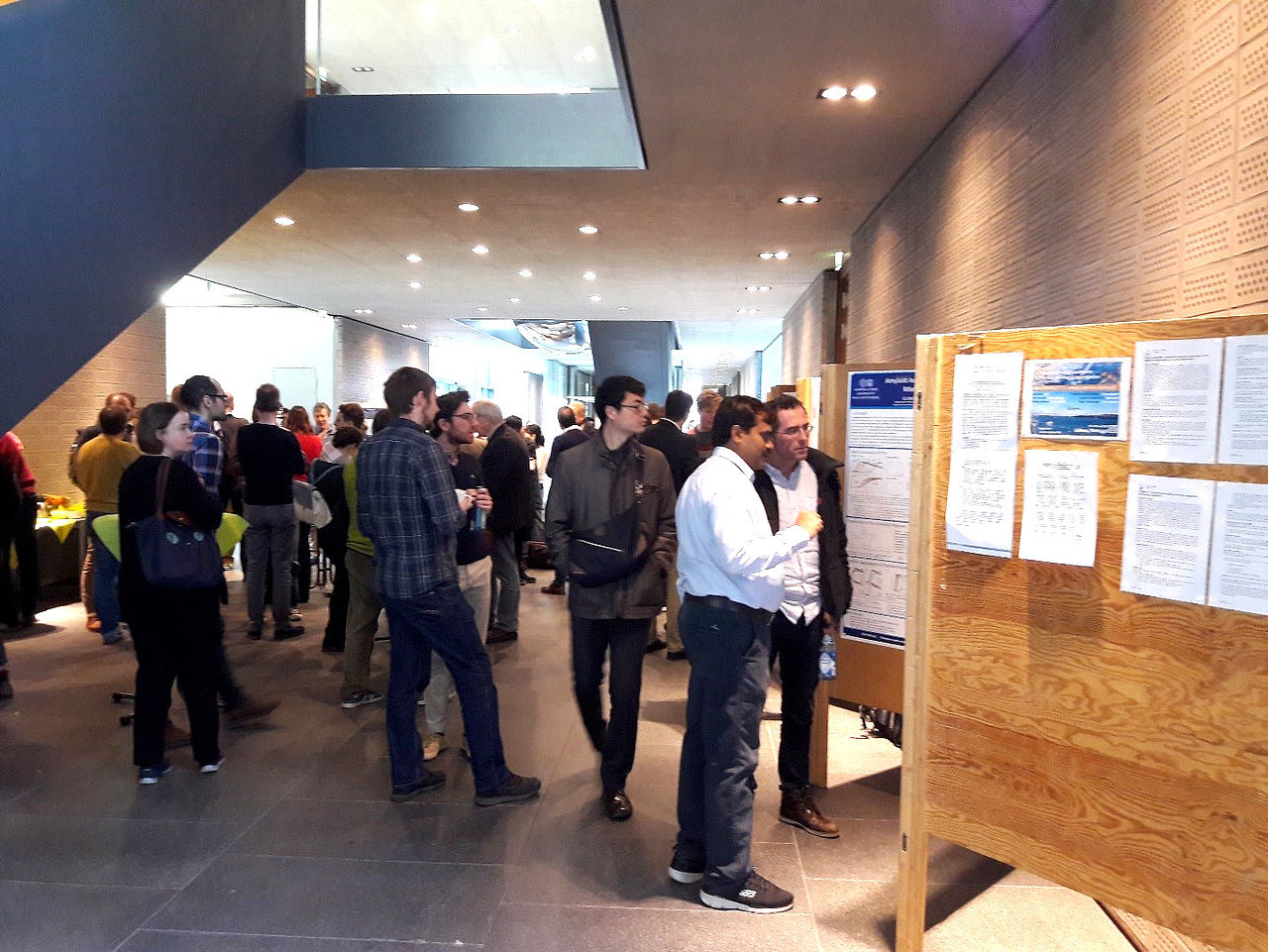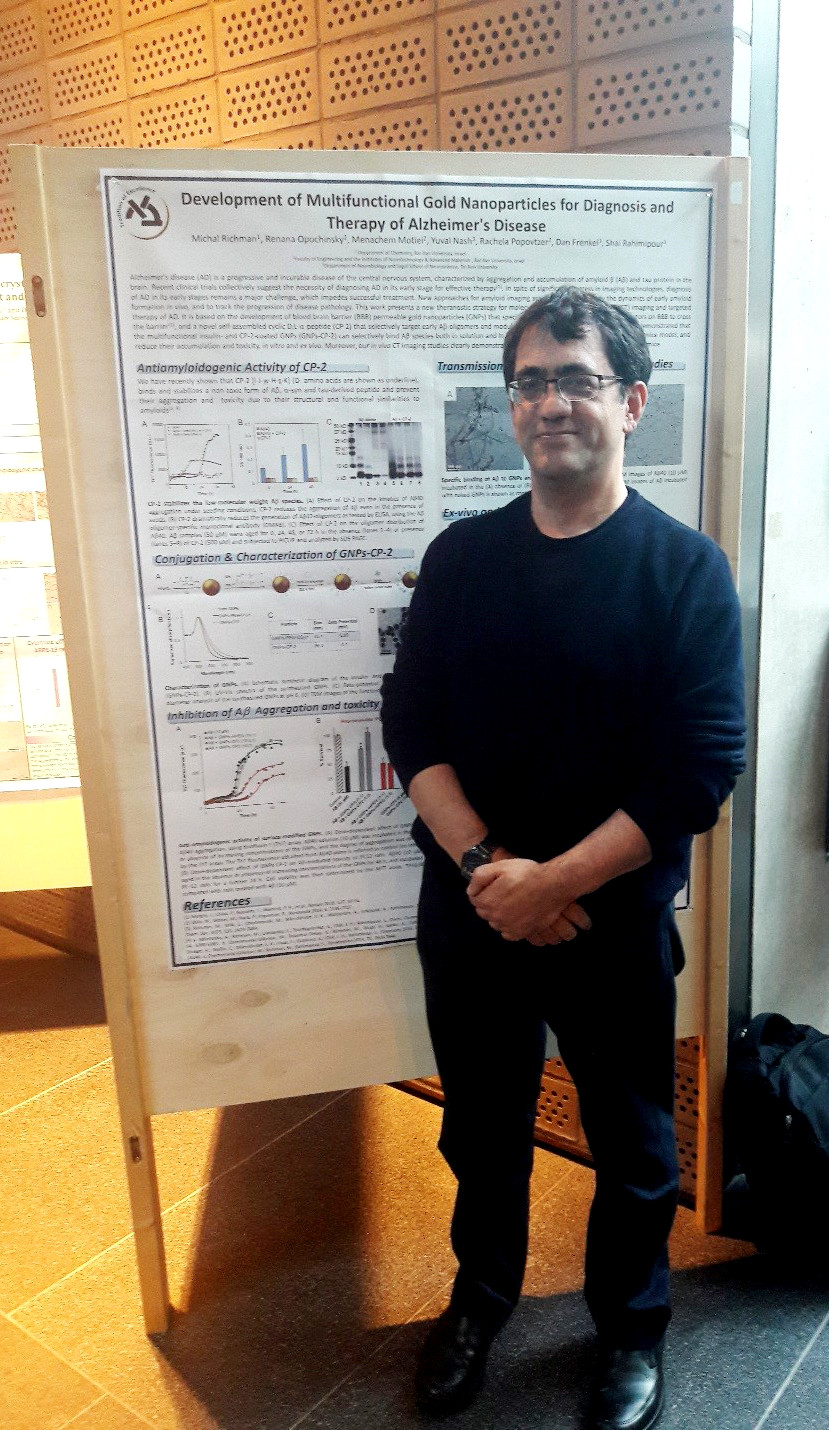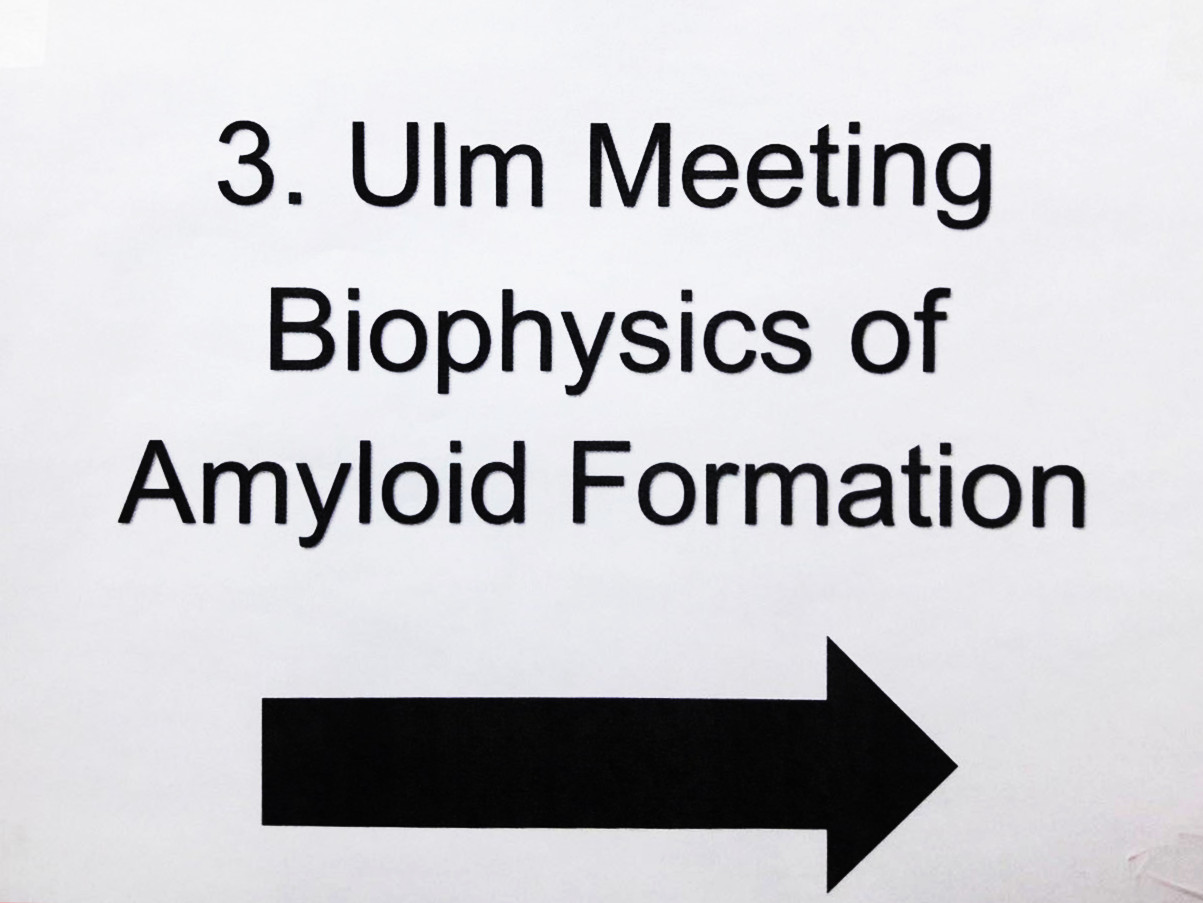Much more than Amyloid β
From February 19th to 21th, CRC1279 board member Prof. Dr. Marcus Fändrich, director of the Institute of Protein Biochemistry, chaired the 3rd Meeting on Biophysics of Amyloid Formation.
Numerous highly respected international speakers followed Prof. Marcus Fändrich’s invitation to Ulm. In total, 34 talks were given by scientists from all over Europe, Japan, the United States and Israel. The poster sessions offered great opportunities for discussion and to initiate new collaborations. Although the presented work was all based on the aggregation of amyloidogenic proteins, the meeting provided exiting insights into a plethora of topics.
Since misfolded proteins are often associated with diseases (e.g. Alzheimer’s and Parkinson’s disease) there is large interest in the detection of these aggregates in the human body. A central problem of current methods is that they only detect elongated species of protein aggregates, so called amyloid fibrils. However, in most cases, the most toxic species are shorter forms such as oligomers and protofibrils. Thus, once amyloid fibrils are detectable with current methods diseases have already widely progressed. Therefore, sensitive diagnosis methods for the early detection of protein aggregation are required. Prof. Hirotsugu Ogi from the Osaka University in Japan presented a fascinating new technique for real-time monitoring of Amyloid β fibrillation. There were also very interesting talks concerning the interactions of amyloid with membranes (Dr. John Viles, Queen Mary University of London, UK) and metals (Prof. Yifat Miller, Ben-Gurion University of the Negev, Israel). It became also evident that there are many more amyloidogenic proteins besides the prominent ones (e.g. Amyloid β, tau and α-synuclein). Importantly, not all of them are (only) detrimental.
Another focus and strength of the meeting were structural and computational methods in amyloid research. While Prof. Marcus Fändrich’s group provides great expertise for Cryo-EM techniques, Prof. Bernd Reif from the Technical University in Munich presented an NMR perspective on protein aggregation.
The keynote lecture of Prof. David Eisenberg from the University of California in Los Angeles was a highlight of the meeting. Even though he will celebrate his 80th birthday soon, Prof. David Eisenberg is still a highly productive and deeply inspiring scientist. As one of the most famous and honored amyloid researchers, he substantially added to today’s understanding of these structures.




